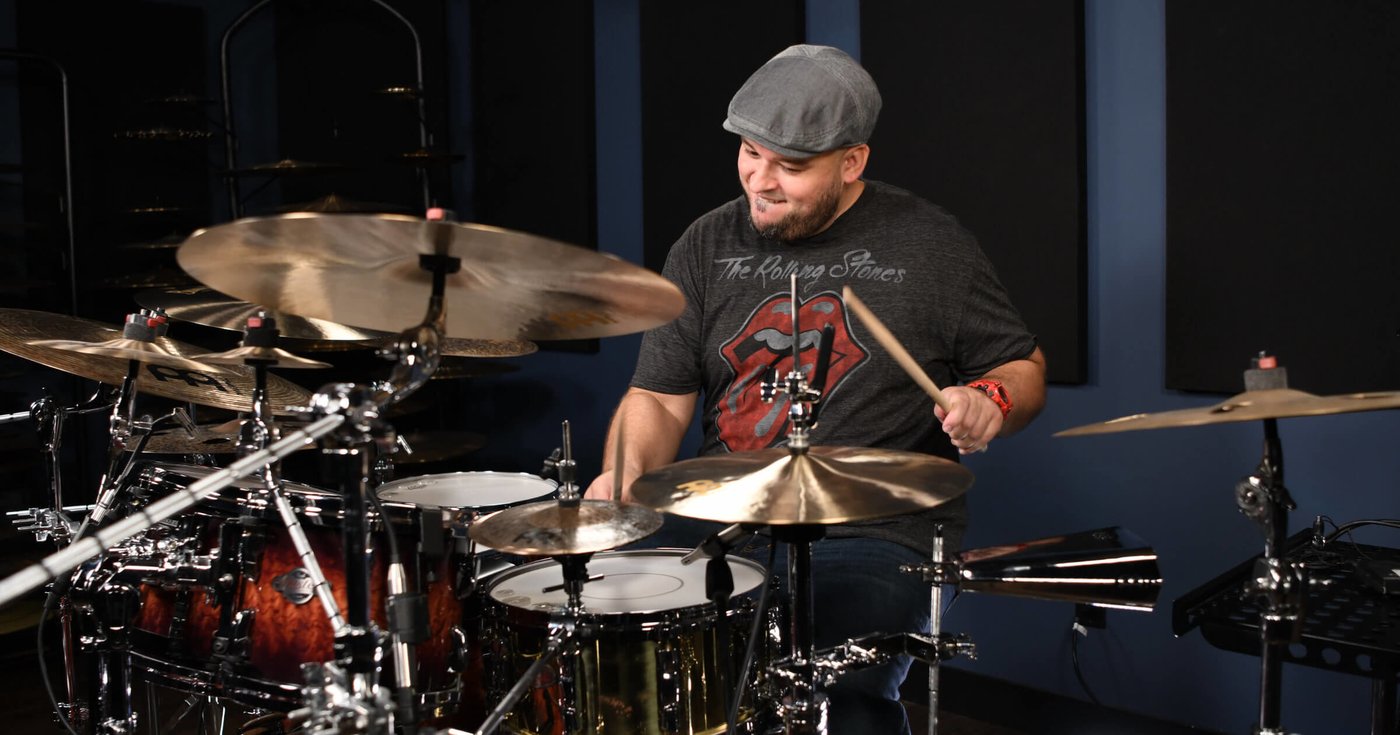
“I learned a rudiment. Now what do I do with it?”
Juan Mendoza’s book Rudiment Creativity answers that question – and then some – by introducing 11 methods for adapting each rudiment to the drum set in a creative way. Anyone can play this stuff, not just seasoned drummers.
In this game-changing video lesson, you’ll learn what those 11 methods are and how rudiments can be applied to grooves. Juan recommends starting with just one of the methods (get outside your comfort zone and choose one you wouldn’t normally think of) and exploring rudiments in a non-traditional sense.
Lesson Index:
0:21 – SONG: “Nada es Imposible” by Rene Gonzales
4:24 – Introduction
7:39 – Splitting hands
10:37 – Moving the right hand
11:55 – Moving the left hand
14:55 – Sweeping inward & outward
17:35 – Subdivision adjustment
19:50 – Substitution
21:25 – Displacement
22:48 – Using a rudiment as an ostinato
24:05 – Adding accents
26:55 – Moving the accents
29:09 – Changing the time signature
31:00 – SOLO
35:40 – Takeaways
36:28 – SONG: “Odd Movements” by Damani Rhodes
Instead of treating a rudiment pattern as a one surface exercise, split it between two surfaces (ie. snare and tom). Try with both right and left hand lead.
While playing the same pattern, start moving the right hand around the toms to create more textures.
You can keep moving the right hand around while you start moving the left around, or keep the right hand steady and move the left between the hi-hat and the snare.
Create melodies by sweeping inward (letting the sound sources come toward the body) or sweeping outward (moving away from the body). Try this with a double stroke roll. In this video, Juan swings the doubles.
Give the pattern a different flavor. Play an 11 stroke roll (organized around a sextuplet) and breaking it up around the kit with different accents.
Substitute one limb for a different one. Try playing a paradiddle diddle where you sub the left hand for the bass drum.
Instead of always starting on the downbeat, put the ‘one’ on a partial or any subdivision.
Play paradiddles and put an accent on the downbeats. Use it in a groove context and get creative.
With that same paradiddle pattern, you can move the accents around to the e, the and, the a, and so on. Paradiddles don’t have to sound mechanical; you can make them groove!
Add accents to a double stroke roll. Move them around. Try combining them with sweeping in and out.
Let’s say you’d normally play a paradiddle with 16th notes in 4/4 or 6/8. Try playing it in 7/8, letting it drift over the bar line. This is a great way to train your ear so when you’re soloing or playing something tricky you can understand how everything falls into place.
Check out more of Juan’s lessons on Drumeo .
Juan plays:
Pearl Drums
Meinl Cymbals
Remo Drumheads
Vic Firth Drumsticks
Follow Juan:
Twitter
Instagram
Facebook
YouTube
Website
We’ve put together a playlist with drumless tracks at different tempos so you can practice these rudiments over real music:
Juan Mendoza is a classically trained musician with a BA and an MA in Music Education who has studied with Pat Petrillo, Nicholas Cerrato, Greg Giannascoli, and Brazilian master Guilherme Franco. In 2002, he won the Drum Corps Association Championship with the Syracuse Brigadiers and the Drum Corps Association Snare Drum Championship. Since then he has traveled the world for numerous clinics, performances and recordings, and won the 2012 Guitar Center Drum Off. He released his first educational book in 2017: Rudiment Creativity Vol. 1.


By signing up you’ll also receive our ongoing free lessons and special offers. Don’t worry, we value your privacy and you can unsubscribe at any time.
We use cookies for traffic data and advertising. Cookie Policy »